UP Board Class 12 Physics Question Paper 2024 PDF (Code 347 FV) is available for download here. The Physics exam was conducted on March 4, 2024 in the Evening Shift from 2 PM to 5:15 PM. The total marks for the theory paper are 70. Students reported the paper to be moderate to tough.
UP Board Class 12 Physics Question Paper 2024 (Code 347 FV) with Solutions
| UP Board Class 12 Physics Question Paper with Answer Key | Check Solution |

Question 1:
(a). V/m and newton/coulomb both are the units of a physical quantity. The physical quantity is:
View Solution
The electric field intensity is defined as the force experienced by a unit positive charge in a field, and its units are newton per coulomb (\(N/C\)) or volt per meter (\(V/m\)). Quick Tip: Understand unit relationships to identify corresponding physical quantities effectively.
(b). In pure resistive alternating circuit, phase difference between voltage and current is:
View Solution
In a pure resistive circuit, the voltage and current are in phase, meaning the phase difference between them is \(0\). Quick Tip: In resistive circuits, voltage and current always align perfectly in time.
(c). The \(p\)-terminal of a \(p\)-\(n\) diode is connected to earth. On applying -2.2 V voltage on the \(n\)-terminal of the diode, in the diode:
View Solution
Applying a high negative voltage at the \(n\)-terminal of a \(p\)-\(n\) diode reverse biases it. If the applied voltage exceeds the breakdown voltage of the diode (typically around -2.2 V for a standard diode), it results in breakdown, allowing current to flow. Quick Tip: Remember that exceeding the breakdown voltage in reverse bias causes the diode to conduct via avalanche or Zener breakdown.
(d). Two nuclei of masses \(m_1\) and \(m_2\) fuse to form a nucleus of mass \(m\). Energy is also released in this process. The true relation in this reference is:
View Solution
In a fusion reaction, mass is converted into energy, resulting in the final mass (\(m\)) being less than the initial total mass (\(m_1 + m_2\)). This mass defect is the source of the released energy. Quick Tip: Mass defect occurs in nuclear reactions due to energy release as per Einstein’s equation \(E = \Delta m c^2\).
(e). Formula for the dynamic mass of a photon is:
View Solution
The dynamic mass of a photon can be derived from the relation \(E = mc^2\). Since \(E = h\nu\), we get \(m = \frac{h\nu}{c^2}\). Using the speed of light \(c\), dynamic mass simplifies to \(\frac{h\nu}{c}\). Quick Tip:For photons, remember \(E = h\nu\) and \(E = mc^2\) to derive \(m = \frac{h\nu}{c^2}\).
(f). Charge on a hollow metallic sphere is \(10\) coulomb. Radius of the sphere is \(5\) cm. Electric field inside the sphere will be:
View Solution
In a hollow metallic sphere, the electric field inside the conductor is zero due to electrostatic shielding. The charge resides only on the outer surface, ensuring no electric field within. Quick Tip: Inside any conductor, the electric field is always zero in electrostatic equilibrium.
(a). Write the name of the mirror used in vehicles as a rearview mirror.
View Solution
Convex mirrors are used in vehicles for rearview because they provide a wider field of view, which helps the driver see more traffic behind.
Quick Tip: Convex mirrors always form virtual, erect, and diminished images, making them ideal for rearview applications.
(b). Explain the meaning of the work function of a photosensitive surface.
of a photosensitive material.
View Solution
Work function is the minimum energy required to eject an electron from the surface of a photosensitive material. It is represented as $W = h\nu_0$, where $\nu_0$ is the threshold frequency. Only photons with energy greater than or equal to the work function can cause photoemission.
Quick Tip: For photoelectric effect: $E_{\text{photon}} \geq W$; otherwise, no electron ejection occurs.
(c). Write the relation between the size of the nucleus and mass number.
Correct Answer:
R∝A 1/3
View Solution
The size of the nucleus is proportional to the cube root of its mass number. This can be expressed as $R = R_0 A^{1/3}$, where $R_0$ is a constant.
Quick Tip: This formula arises from the assumption that the nucleus is roughly spherical and its density is constant.
(d). Of which quantity is the unit kilowatt-hour? How many joules are there in 1 kilowatt-hour?
Energy; 1 kilowatt-hour = 3.6 × 106joules
View Solution
Kilowatt-hour is a unit of energy. $1$ kilowatt-hour corresponds to $1000$ watts of power used over $1$ hour, which equals $3600 \times 1000 = 3.6 \times 10^6$ joules.
Quick Tip: To convert kilowatt-hours to joules, use $1 \text{ kWh} = 3.6 \times 10^6 \text{ J}$.
(e). An uncharged rod is placed near a charged rod. What will be the effect on the potential of the charged rod?
View Solution
Since the uncharged rod does not contribute any charge to the charged rod, the potential of the charged rod remains unaffected.
Quick Tip: The potential depends on the charge and distance; since the uncharged rod has no charge, there is no influence.
(f). Show the magnetic field lines produced by a straight current-carrying wire.
circles around the wire, with their direction determined by the right-hand thumb rule.
View Solution
The direction of the magnetic field is given by curling the fingers of your right hand around the wire while your thumb points in the direction of the current. The field is stronger near the wire and weaker as you move away.
Quick Tip: Use the right-hand thumb rule for determining the direction of magnetic field lines around a straight current-carrying conductor.
(a). Define current sensitivity of a galvanometer. How can it be increased?
View Solution
Current sensitivity of a galvanometer is defined as the deflection produced in the galvanometer per unit current flowing through it. It is given by: \[ S_I = \frac{\theta}{I}, \] where $\theta$ is the deflection and $I$ is the current.
Increasing current sensitivity:
- Increasing the number of turns in the galvanometer coil.
- Using a stronger magnetic field.
- Reducing the torsional constant of the suspension wire.
Quick Tip: Increasing current sensitivity alone may not necessarily improve the overall sensitivity because reducing the damping can cause instability.
(b). Explain the meaning of power factor and wattless current in alternating circuits.
View Solution
1. Power Factor:
The power factor of an AC circuit is defined as the cosine of the phase angle $\phi$ between the voltage and the current. It is given by: \[ \text{Power Factor} = \cos\phi = \frac{\text{True Power}}{\text{Apparent Power}}. \] 2. Wattless Current:
The component of the alternating current that contributes no power to the circuit is called the wattless current. It is the current component perpendicular to the voltage.
Quick Tip: A high power factor close to 1 indicates efficient power usage, whereas a low power factor suggests significant reactive power.
(c). Electric field in an electromagnetic wave is given by: \[ E_y = 3 \times 10^{-7} \sin(0.5 \times 10^3 x + 1.5 \times 10^{11} t) \, \text{V/m}. \] Find the wavelength and the equation for the magnetic field of the wave.
View Solution
1.Wavelength ($\lambda$):
From the equation, the wave number $k = 0.5 \times 10^3 \, \text{m}^{-1}$. The wavelength is given by: \[ \lambda = \frac{2\pi}{k} = \frac{2\pi}{0.5 \times 10^3} = 12.57 \, \text{m}. \] 2. Magnetic Field ($B_z$):
The magnetic field is perpendicular to both the electric field and the direction of wave propagation. The amplitude of the magnetic field is: \[ B_0 = \frac{E_0}{c} = \frac{3 \times 10^{-7}}{3 \times 10^8} = 1 \times 10^{-15} \, \text{T}. \] The equation for the magnetic field is: \[ B_z = 1 \times 10^{-15} \sin(0.5 \times 10^3 x + 1.5 \times 10^{11} t) \, \text{T}. \]
Quick Tip: The relationship between $E_0$ and $B_0$ in electromagnetic waves is $B_0 = \frac{E_0}{c}$, where $c$ is the speed of light.
(d). Explain the difference between diamagnetic and paramagnetic substances.
View Solution
1.Diamagnetic Substances:
- Weakly repelled by a magnetic field.
- Magnetic susceptibility ($\chi$) is negative.
- Examples: Bismuth, Copper. 2. Paramagnetic Substances:
- Weakly attracted by a magnetic field.
- Magnetic susceptibility ($\chi$) is positive.
- Examples: Aluminum, Oxygen.
Quick Tip: Diamagnetic substances exhibit induced magnetism in the opposite direction of the external field, while paramagnetic substances align slightly with the field.
(a). Give a brief comment on the need of displacement current. Which physical quantity will be same for X-rays of wavelength $10^{-10}$ m, radio waves of wavelength 55 m, and light waves of wavelength 6000 Å?
View Solution
1.Need of Displacement Current:
Displacement current is needed to account for a time-varying electric field in cases where conduction current does not exist. It ensures that Maxwell's equations remain consistent, particularly in explaining electromagnetic waves' propagation. 2. Same Physical Quantity:
The speed of electromagnetic waves in a vacuum, $c$, is the same for X-rays, radio waves, and light waves, regardless of their wavelength. It is approximately $3 \times 10^8 \, \text{m/s}$.Quick Tip: Displacement current arises due to a time-varying electric flux and is given by $\epsilon_0 \frac{d\Phi_E}{dt}$.
(b). State the difference between isotopic, isobaric, and isotonic nuclei. Give example in support of your answer.
View Solution
1.Isotopes:
Nuclei of the same element with the same atomic number but different mass numbers.
Example: ${}^{12}_{6}\text{C}$ and ${}^{14}_{6}\text{C}$. 2. Isobars:
Nuclei of different elements with the same mass number but different atomic numbers.
Example: ${}^{14}_{6}\text{C}$ and ${}^{14}_{7}\text{N}$. 3. Isotones:
Nuclei with the same number of neutrons but different atomic and mass numbers.
Example: ${}^{14}_{6}\text{C}$ and ${}^{15}_{7}\text{N}$.
Quick Tip: Remember: - Isotopes → Same protons. - Isobars → Same total nucleons. - Isotones → Same neutrons.
(c). Explain the meanings of electric dipole and electric dipole moment. In an electric dipole charges of $+20 \, \mu\text{C}$ and $-20 \, \mu\text{C}$ are separated by a distance of 1.0 cm. Find the electric field intensity at an axial point at a distance of 1 m from the pole of the dipole.
View Solution
1.Electric Dipole:
An electric dipole consists of two equal and opposite charges separated by a small distance. 2. Electric Dipole Moment ($p$):
The product of the magnitude of one of the charges and the separation between them: \[ p = q \cdot d. \] For the given dipole: \[ p = (20 \times 10^{-6}) \cdot (1 \times 10^{-2}) = 2 \times 10^{-7} \, \text{C.m}. \] 3. Electric Field Intensity:
At an axial point, the field is given by: \[ E = \frac{2kp}{r^3}, \] where $k = \frac{1}{4\pi \epsilon_0} = 9 \times 10^9 \, \text{N·m}^2/\text{C}^2$, $p = 2 \times 10^{-7} \, \text{C·m}$, and $r = 1 \, \text{m}$. \[ E = \frac{2 \cdot (9 \times 10^9) \cdot (2 \times 10^{-7})}{1^3} = 3600 \, \text{N/C}. \]
Quick Tip: The axial field is stronger than the equatorial field by a factor of 2 in the case of dipoles.
(d). Explain the difference between electromotive force (e.m.f.) and terminal potential difference of a cell. A cell of e.m.f. 2.0 V is connected to an external resistance of $3.9 \, \Omega$. Current flowing in the circuit is $0.5 \, \text{A}$. What is the internal resistance of the cell?
View Solution
1.E.m.f. ($E$):
The e.m.f. is the maximum potential difference of a cell when no current flows through it. 2. Terminal Potential Difference ($V$):
The potential difference across the terminals of the cell when current flows through the cell. Calculation:
Using $E = V + Ir$, where $r$ is the internal resistance: \[ V = I \cdot R = 0.5 \cdot 3.9 = 1.95 \, \text{V}. \] \[ 2.0 = 1.95 + (0.5 \cdot r) \implies r = \frac{2.0 - 1.95}{0.5} = 0.1 \, \Omega. \]
Quick Tip: Internal resistance causes the terminal voltage to drop as current increases in the circuit.
(e). Two thin convex lenses are placed in contact. Find the formula for the focal length of this combination. If one lens is replaced by a concave lens of focal length equal to that of the other lens, what will be the behavior of the combination?
View Solution
1.Focal Length of the Combination:
If $f_1$ and $f_2$ are the focal lengths of two convex lenses in contact, the equivalent focal length is given by: \[ \frac{1}{F} = \frac{1}{f_1} + \frac{1}{f_2}. \] 2. Replacing with a Concave Lens:
If one lens is replaced by a concave lens with $f_1 = -f_2$, the net focal length becomes infinite: \[ \frac{1}{F} = \frac{1}{f_1} + \frac{1}{-f_1} = 0 \implies F \to \infty. \] Thus, the combination behaves as a plane glass plate.
Quick Tip: A combination of lenses in contact is more compact but changes behavior significantly with lens types (convex vs concave).
(a). Write the conditions to obtain the interference between waves. What is meant by coherent source?
View Solution
1. Conditions for Interference:
- The two sources of light must be coherent.
- The sources must have the same wavelength and frequency.
- The two waves must have a constant phase difference.
- The two light waves should overlap in space to form a region of constructive or destructive interference.
2. Coherent Source:
A coherent source emits waves with a constant phase difference and the same frequency. Examples of coherent sources include lasers and two slits illuminated by the same monochromatic light source.
(b). Write the formula for the potential energy of a magnetic dipole placed in an external magnetic field. What will be the maximum and minimum values of potential energy?
View Solution
1. Potential Energy Formula:
The potential energy $U$ of a magnetic dipole in an external magnetic field is given by: \[ U = -\vec{M} \cdot \vec{B} = -MB \cos \theta, \] where $M$ is the magnetic dipole moment, $B$ is the external magnetic field strength, and $\theta$ is the angle between $\vec{M}$ and $\vec{B}$.
2. Maximum Value:
When $\cos \theta = -1 \; (\theta = 180^\circ)$, the potential energy is: \[ U_{\text{max}} = MB. \]
3. Minimum Value:
When $\cos \theta = 1 \; (\theta = 0^\circ)$, the potential energy is: \[ U_{\text{min}} = -MB.
(c). Write the meaning of polarization of light. How are unpolarized and plane polarized light represented? Which nature of light waves is proved by polarization of light?
View Solution
1. Meaning of Polarization:
Polarization refers to the phenomenon in which the oscillations of the electric field vector in a light wave are restricted to one particular plane perpendicular to the direction of propagation.
2. Representation:
- Unpolarized Light: Oscillations occur in all directions perpendicular to the direction of propagation. Represented as random electric field lines.
- Plane Polarized Light: Oscillations occur only in a single plane perpendicular to the propagation direction.
3. Nature Proved by Polarization:
Polarization of light proves the transverse nature of light waves.
(c). Show the difference between conductor, semiconductor, and insulator by energy band diagram of solids.
View Solution
The difference between conductor, semiconductor, and insulator based on energy band diagrams is as follows:
1. Conductor:
- Valence and conduction bands overlap, allowing free movement of electrons.
- There is no energy gap.
2. Semiconductor:
- A small energy gap ($<3$ eV) exists between the valence and conduction bands.
- Electrons can jump from the valence band to the conduction band when external energy is supplied (e.g., thermal energy or light).
3. Insulator:
- A large energy gap ($>5$ eV) exists between the valence and conduction bands, preventing electron flow under normal conditions.
(d). Find the value of current flowing in the circuit given below. Compare the algebraic sum of the voltage across the terminals of the resistance and the capacitor with the voltage given to the circuit. Why is the difference obtained in them?
View Solution
Circuit parameters:
Resistance (\(R\)) = \(200 \, \Omega\)
Capacitance (\(C\)) = \(15 \, \mu\mathrm{F}\)
Voltage (\(V\)) = \(220 \, \mathrm{V}\)
Frequency (\(f\)) = \(50 \, \mathrm{Hz}\)
Quick Tip: For AC circuits, always consider phase differences between components while calculating the resultant voltage or current.
(e). Write down the postulates of Bohr atomic model.
View Solution
1. Electrons revolve around the nucleus in fixed circular orbits called stationary orbits. 2. Each orbit corresponds to a specific energy level, and an electron in a particular orbit does not radiate energy. 3. Electrons can jump between energy levels by absorbing or emitting a photon with energy: ∆E = hν. 4. The angular momentum of electrons in stationary orbits is quantized and given by: L = n¯h where n = 1, 2, 3, . . . Quick Tip Quick Tip: Bohr’s quantization explains the discrete spectral lines of hydrogen atoms effectively.What are dielectric materials? Define electric susceptibility and relative permittivity of a medium. Deduce the relation between the two.
View Solution
1.Dielectric Materials:
Dielectric materials are insulating materials that can be polarized when placed in an electric field. They do not conduct electricity but help in storing electrical energy by reducing the effective electric field.
2.Electric Susceptibility:
Electric susceptibility ($\chi_e$) of a medium is a dimensionless measure of the ease with which the medium becomes polarized in response to an applied electric field. It is defined as: \[ \chi_e = \frac{P}{\epsilon_0 E} \] where $P$ is the polarization, $\epsilon_0$ is the permittivity of free space, and $E$ is the electric field intensity.
3.Relative Permittivity:
Relative permittivity ($\epsilon_r$), also called the dielectric constant, is the ratio of the permittivity of the medium ($\epsilon$) to the permittivity of free space ($\epsilon_0$). It is expressed as: \[ \epsilon_r = \frac{\epsilon}{\epsilon_0} \]
4.Relation between $\chi_e$ and $\epsilon_r$:
The relative permittivity and electric susceptibility are related as: \[ \epsilon_r = 1 + \chi_e \]
Quick Tip: Dielectrics are key components in capacitors, where they enhance the storage capacity by reducing the effective electric field between the plates.
Establish the relation between drift velocity of electrons and current flowing in a conductor. Length of a conducting wire is $3.0 \, \mathrm{m}$ and free electron density in it is $8.5 \times 10^{28} \, \mathrm{m^{-3}}$. How much time will the electron take to drift from one end to the other end of the wire? Cross-section of the wire is $2.0 \times 10^{-6} \, \mathrm{m^2}$ and current flowing in the wire is $3.0 \, \mathrm{A}$?
View Solution
1.Drift Velocity Relation:
Drift velocity ($v_d$) is the velocity of electrons due to an applied electric field. The current ($I$) flowing in a conductor is related to the drift velocity by the formula: \[ I = n e A v_d \] where: - $n$ = number of free electrons per unit volume, - $e$ = charge of an electron ($1.6 \times 10^{-19} \, \mathrm{C}$), - $A$ = cross-sectional area of the wire, - $v_d$ = drift velocity.
From the equation: \[ v_d = \frac{I}{n e A} \]
2. Calculation of Drift Velocity:
Substituting the given values: \[ v_d = \frac{3.0}{(8.5 \times 10^{28})(1.6 \times 10^{-19})(2.0 \times 10^{-6})} \] \[ v_d = 1.1 \times 10^{-4} \, \mathrm{m/s} \]
3.Time Taken for Drift ($t$):The time taken for electrons to drift the length of the wire is given by: \[ t = \frac{\text{Length of wire}}{\text{Drift velocity}} \] \[ t = \frac{3.0}{1.1 \times 10^{-4}} \] \[ t \approx 27,273 \, \mathrm{seconds} \approx 7.6 \, \mathrm{hours} \]
Quick Tip: Drift velocity is extremely small compared to the speed of the electric signal propagation, which occurs almost instantaneously throughout the conductor.
Discuss the magnitude and direction of force acting on a charge moving in a uniform magnetic field. If charge moves along the direction of the magnetic field, what will be the magnitude of the force? Comment on the work done by the magnetic field on the moving charge.
View Solution
When a charged particle moves in a magnetic field, it experiences a force given by the Lorentz force law:
\[ \vec{F} = q (\vec{v} \times \vec{B}), \]
where
- \( \vec{F} \) is the force,
- \( q \) is the charge,
- \( \vec{v} \) is the velocity of the particle,
- \( \vec{B} \) is the magnetic field.
This force is always perpendicular to both the velocity of the charge and the magnetic field. If the charge moves along the direction of the magnetic field, \( \vec{v} \parallel \vec{B} \), then the cross product \( \vec{v} \times \vec{B} \) will be zero, and thus no force will be exerted on the charge.
Regarding the work done by the magnetic field, since the force is perpendicular to the motion of the particle, the work done by the magnetic field on the particle is zero:
\[ W = \vec{F} \cdot \vec{d} = 0. \]
The magnetic field does no work on a charged particle because the direction of the force is always perpendicular to the direction of motion. Quick Tip: The force on a charge moving in a magnetic field is zero when the charge moves along the field's direction, and the magnetic field does no work on the charge.
OR
Question 7:
What is the meaning of electromagnetic induction? Explain Faraday's laws of electromagnetic induction. Radius of a circular coil is 10 cm, resistance is 2 ohm and number of turns in it is 500. Plane of coil is perpendicular to a magnetic field of \( 3 \times 10^{-5} \) tesla. Coil rotates 180° about its perpendicular axis in 0.25 s. Find the induced voltage and current in the coil.
View Solution
Electromagnetic induction refers to the process in which a changing magnetic field induces an electromotive force (EMF) in a coil or loop of wire. This phenomenon was discovered by Michael Faraday and is described by Faraday's laws of induction:
1. Faraday's First Law states that a change in the magnetic field within a closed loop induces an EMF in the loop. The induced EMF is proportional to the rate of change of the magnetic flux.
2. Faraday's Second Law gives the magnitude of the induced EMF as:
\[ \mathcal{E} = -N \frac{d\Phi_B}{dt}, \]
where \( N \) is the number of turns in the coil and \( \Phi_B \) is the magnetic flux given by \( \Phi_B = B A \cos \theta \), with \( A \) being the area of the coil and \( \theta \) the angle between the magnetic field and the normal to the coil.
Given:
- Radius \( r = 10 \, cm = 0.1 \, m \),
- Resistance \( R = 2 \, \Omega \),
- Number of turns \( N = 500 \),
- Magnetic field strength \( B = 3 \times 10^{-5} \, T \),
- Rotation angle \( \theta = 180^\circ \) (which is \( \pi \, radians \)),
- Time taken \( t = 0.25 \, s \).
The area of the coil is given by: \[ A = \pi r^2 = \pi (0.1)^2 = 3.14 \times 10^{-2} \, m^2. \]
The magnetic flux at the start (when the coil is perpendicular to the magnetic field): \[ \Phi_B = B A = 3 \times 10^{-5} \times 3.14 \times 10^{-2} = 9.42 \times 10^{-7} \, Wb. \]
After rotating by 180°, the flux becomes: \[ \Phi_B' = -\Phi_B = -9.42 \times 10^{-7} \, Wb. \]
The change in magnetic flux \( \Delta \Phi_B \) is: \[ \Delta \Phi_B = \Phi_B' - \Phi_B = -9.42 \times 10^{-7} - 9.42 \times 10^{-7} = -1.884 \times 10^{-6} \, Wb. \]
Now, the induced EMF is: \[ \mathcal{E} = -N \frac{\Delta \Phi_B}{\Delta t} = -500 \times \frac{-1.884 \times 10^{-6}}{0.25} = 3.768 \times 10^{-3} \, V = 3.77 \, mV. \]
The induced current is given by Ohm's law: \[ I = \frac{\mathcal{E}}{R} = \frac{3.77 \times 10^{-3}}{2} = 1.885 \times 10^{-3} \, A = 1.885 \, mA. \] Quick Tip: The induced EMF in a coil is directly proportional to the number of turns and the rate of change of magnetic flux. When a coil rotates in a magnetic field, the change in flux induces an EMF, and the current can be found using Ohm's law.
Draw the diffraction pattern of light for a single slit and write the formula for the width of the central maximum. Mention the factors affecting the width of the central maximum. What may be the maximum possible value of the angle of diffraction?
View Solution
The diffraction pattern of light passing through a single slit consists of a central maximum and several side minima and maxima. The central maximum is the brightest and widest, with dimmer and narrower maxima on either side.
The formula for the angular position θ of the minima is given by:
a sin θ = m λ, where m = ±1, ±2, ±3, …
where:
- a is the width of the slit,
- λ is the wavelength of light,
- m is the order of the minima.
For the central maximum, the angular width Δ θ (from m = -1 to m = +1) is given by:
Δ θ = 2λ / a
The width of the central maximum is inversely proportional to the slit width a and directly proportional to the wavelength λ.
Factors Affecting the Width of Central Maximum:
- Slit Width (a): The width of the central maximum decreases as the slit width increases.
- Wavelength: The width of the central maximum increases with the increase in wavelength.
Maximum Possible Value of the Angle of Diffraction:
The maximum possible value of the diffraction angle θ is 90°, corresponding to m → ∞ (where the diffraction becomes complete).
Quick Tip:
The central maximum's width in a single-slit diffraction pattern is determined by the slit width and the wavelength of the light. Larger wavelengths or smaller slits result in wider central maxima.
State the Huygens principle of secondary wavelets. On its basis, verify the laws of refraction of light.
View Solution
Huygens' principle states that every point on a wavefront serves as a source of secondary wavelets. These secondary wavelets propagate forward and combine to form the new position of the wavefront after a certain time. The position of the new wavefront is the envelope of all the secondary wavelets.
To verify the laws of refraction using Huygens' principle:
1. Incident Ray and Refraction:
Consider a wavefront approaching the boundary between two media with different refractive indices, \( n_1 \) and \( n_2 \), at an angle of incidence \( \theta_1 \).
According to Huygens' principle, at the interface, the secondary wavelets from each point on the wavefront travel into the second medium.
2. Effect of Different Refractive Indices:
Since the speed of light is different in the two media, the secondary wavelets travel at different speeds. The wavelets in the medium with lower refractive index \( n_2 \) (faster speed) will move faster than those in the medium with higher refractive index \( n_1 \) (slower speed).
3. Wavefront Propagation:
The change in speed causes the wavefront to bend at the interface. This bending of the wavefront is what we observe as the phenomenon of refraction.
According to Huygens' principle, the refracted wavefront is formed by the new positions of the secondary wavelets, and the angle of refraction \( \theta_2 \) is given by Snell's law:
\[ \frac{\sin \theta_1}{\sin \theta_2} = \frac{v_1}{v_2} = \frac{n_2}{n_1}, \]
where:
- \( \theta_1 \) is the angle of incidence,
- \( \theta_2 \) is the angle of refraction,
- \( v_1 \) and \( v_2 \) are the speeds of light in the first and second mediums, respectively,
- \( n_1 \) and \( n_2 \) are the refractive indices of the two media. Quick Tip: Huygens' principle provides a simple explanation for refraction by modeling each point on a wavefront as a source of new wavelets, showing how light bends when passing through different media.
What are de Broglie matter waves? Mention its main properties.
View Solution
De Broglie matter waves are hypothetical waves associated with particles that have mass. Louis de Broglie proposed that every moving particle can be associated with a wave, known as a matter wave, with a wavelength given by:
\[ \lambda = \frac{h}{p} = \frac{h}{mv}, \]
where:
- \( h \) is Planck's constant,
- \( p \) is the momentum of the particle,
- \( m \) is the mass of the particle,
- \( v \) is the velocity of the particle.
Main Properties of de Broglie Matter Waves:
1. Wave-Particle Duality: Matter exhibits both particle-like and wave-like behavior. The concept of de Broglie matter waves is a manifestation of this dual nature.
2. Wavelength Dependency: The wavelength of the matter wave is inversely proportional to the momentum of the particle. High mass or velocity results in a smaller wavelength.
3. Interference and Diffraction: Like light waves, matter waves can also interfere and diffract, demonstrating their wave-like properties.
4. Non-Classical Nature: Matter waves are different from classical mechanical waves. They reflect the quantum mechanical nature of particles.
Maximum de Broglie Wavelength:
For three particles (α-particle, proton, and electron) with the same kinetic energy, the de Broglie wavelength is given by:
\[ K.E. = \frac{1}{2} m v^2 \quad \Rightarrow \quad v = \sqrt{\frac{2 K.E.}{m}}, \]
and
\[ \lambda = \frac{h}{mv}. \]
Since \( v \) is inversely proportional to the square root of the mass, the particle with the smallest mass will have the largest wavelength. Among the three particles:
- The electron has the smallest mass.
Thus, the de Broglie wavelength associated with the electron will be maximum. Quick Tip: The de Broglie wavelength is inversely proportional to the mass of a particle, so lighter particles exhibit longer wavelengths at the same kinetic energy.
Explain the effect of forward and reverse biasing on the depletion region and potential barrier of a p-n junction. Draw the circuit diagram of a full-wave rectifier using junction diode. Depict the shape of input and output current.
View Solution
Effect of Forward Biasing on p-n Junction:
- In forward bias, the p-type region is connected to the positive terminal and the n-type region is connected to the negative terminal of the battery.
- The majority carriers (holes in p-type and electrons in n-type) move toward the junction.
- This reduces the width of the depletion region and the potential barrier, allowing current to flow through the junction.
Effect of Reverse Biasing on p-n Junction:
- In reverse bias, the p-type region is connected to the negative terminal and the n-type region to the positive terminal.
- The majority carriers are pulled away from the junction, increasing the width of the depletion region and the potential barrier.
- This prevents current from flowing through the junction, except for a very small leakage current.
Circuit Diagram of a Full-Wave Rectifier Using Junction Diodes:
In this diagram:
- The input AC signal is applied to the primary coil of the transformer.
- Two diodes (D1 and D2) are used to rectify the AC signal. During the positive half cycle, diode D1 conducts, and during the negative half cycle, diode D2 conducts.
**Shape of Input and Output Current:**
In the graph:
- The input current is a sinusoidal alternating current (AC) wave.
- The output current, after full-wave rectification, is a pulsating direct current (DC) wave, with no negative half cycles. Quick Tip: In a full-wave rectifier, both halves of the AC input are used, producing a smoother and more efficient DC output than a half-wave rectifier.
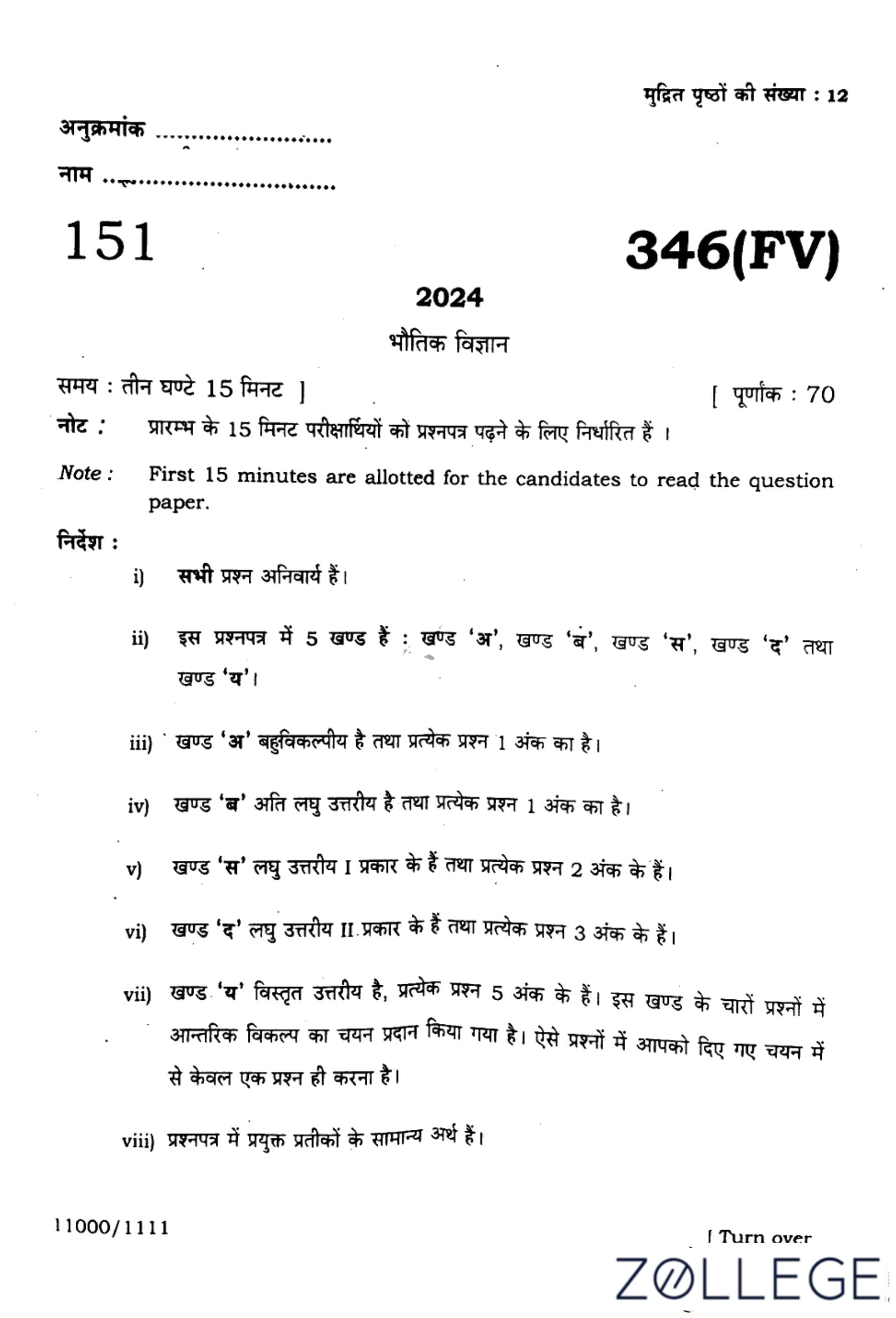
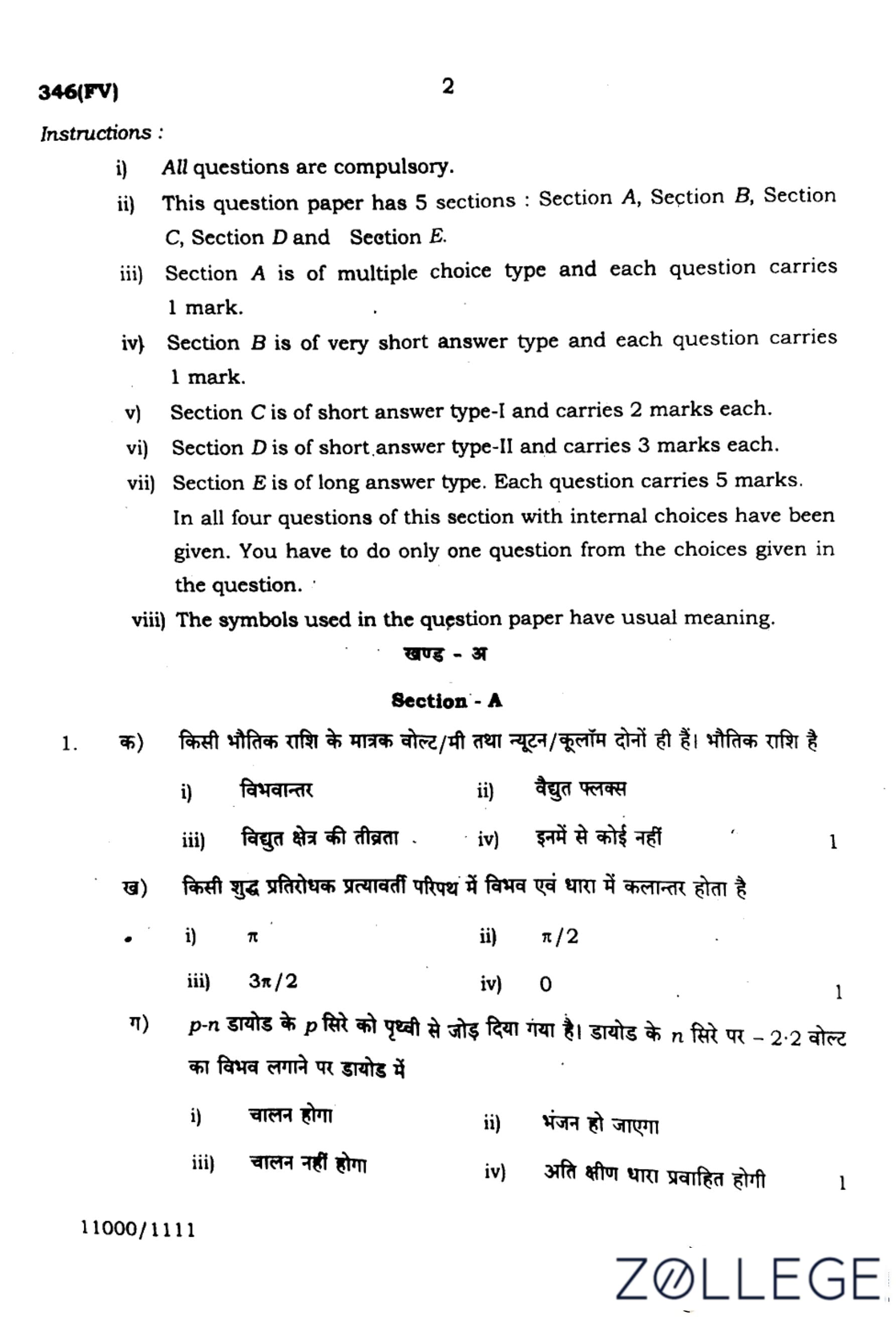
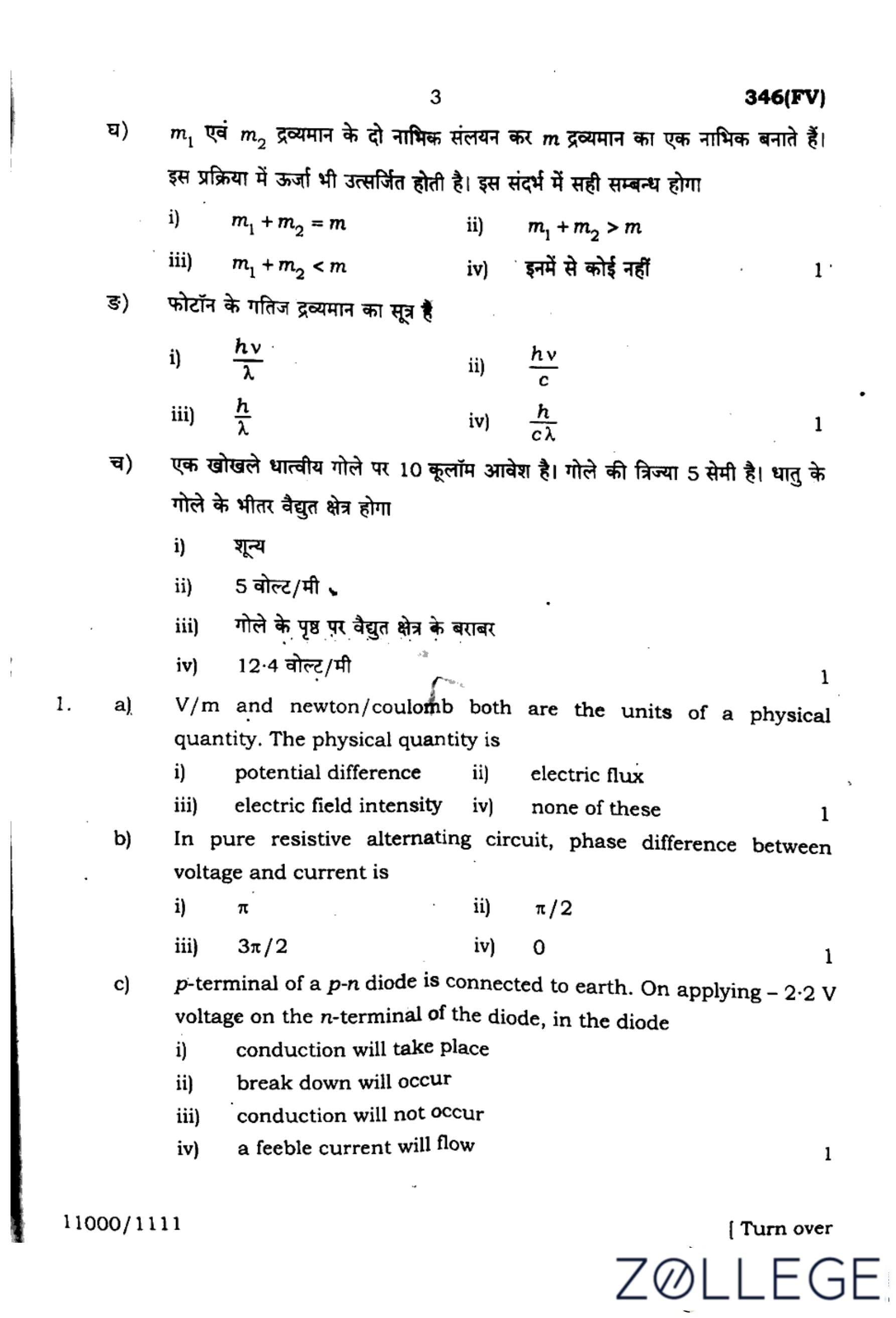

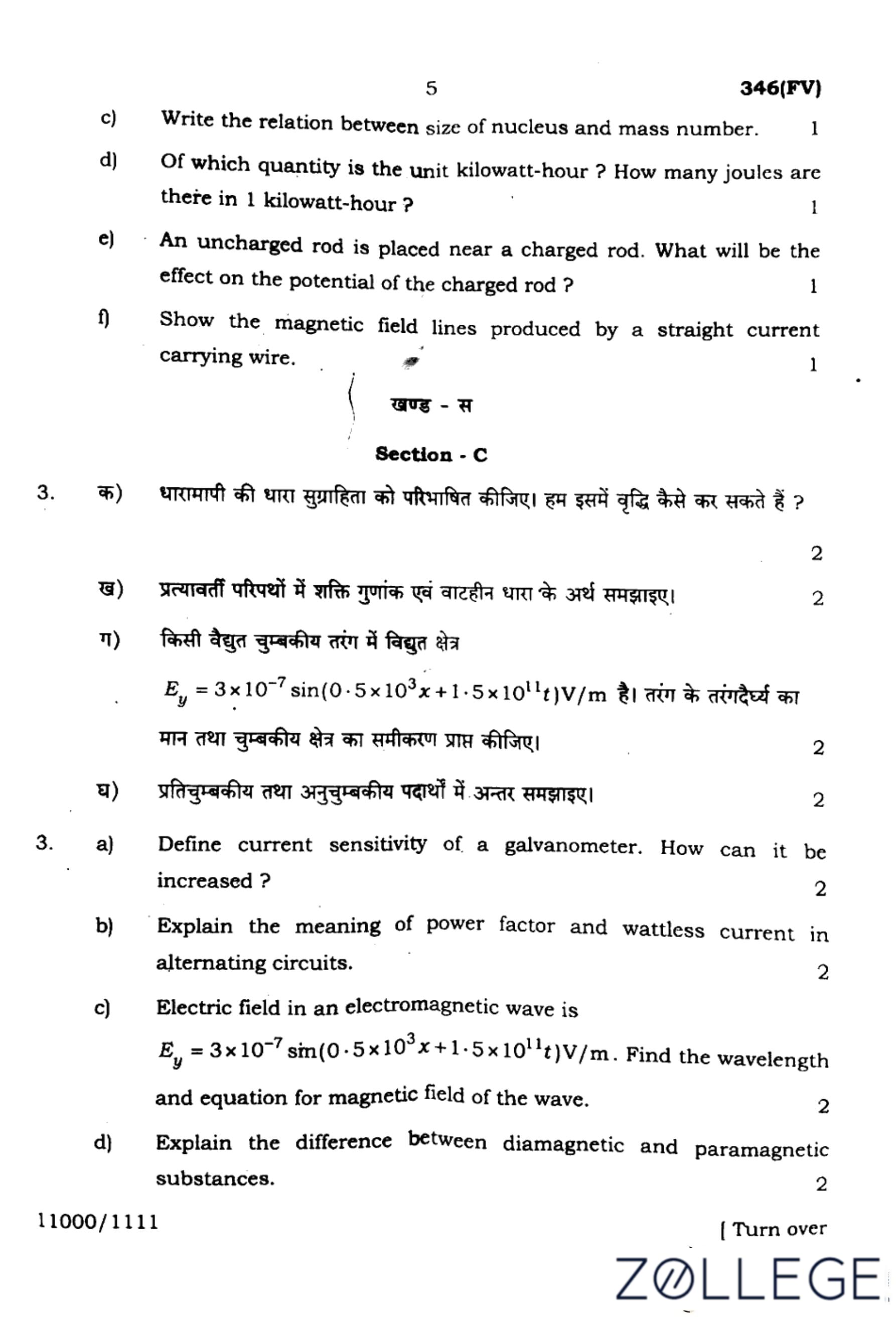
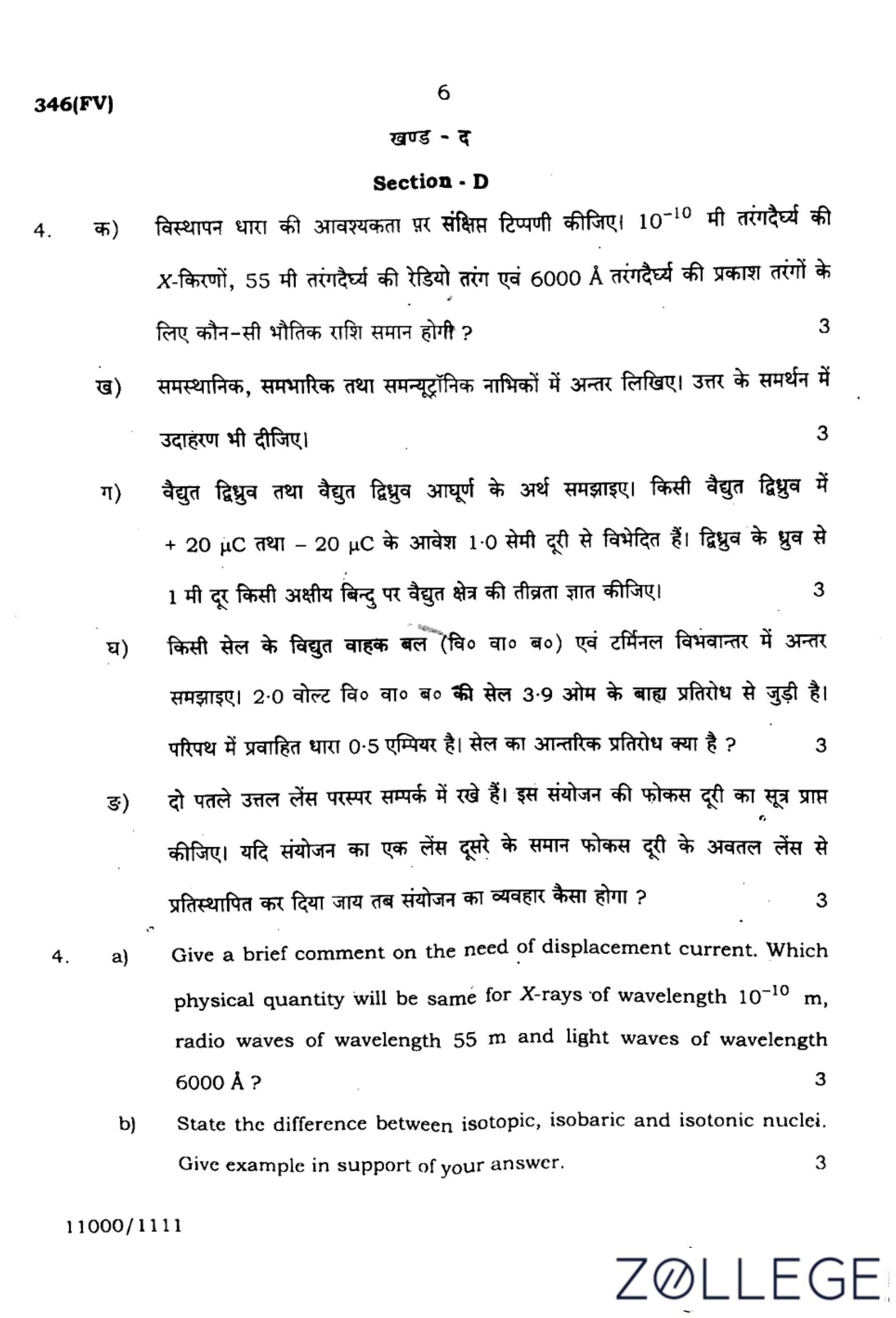
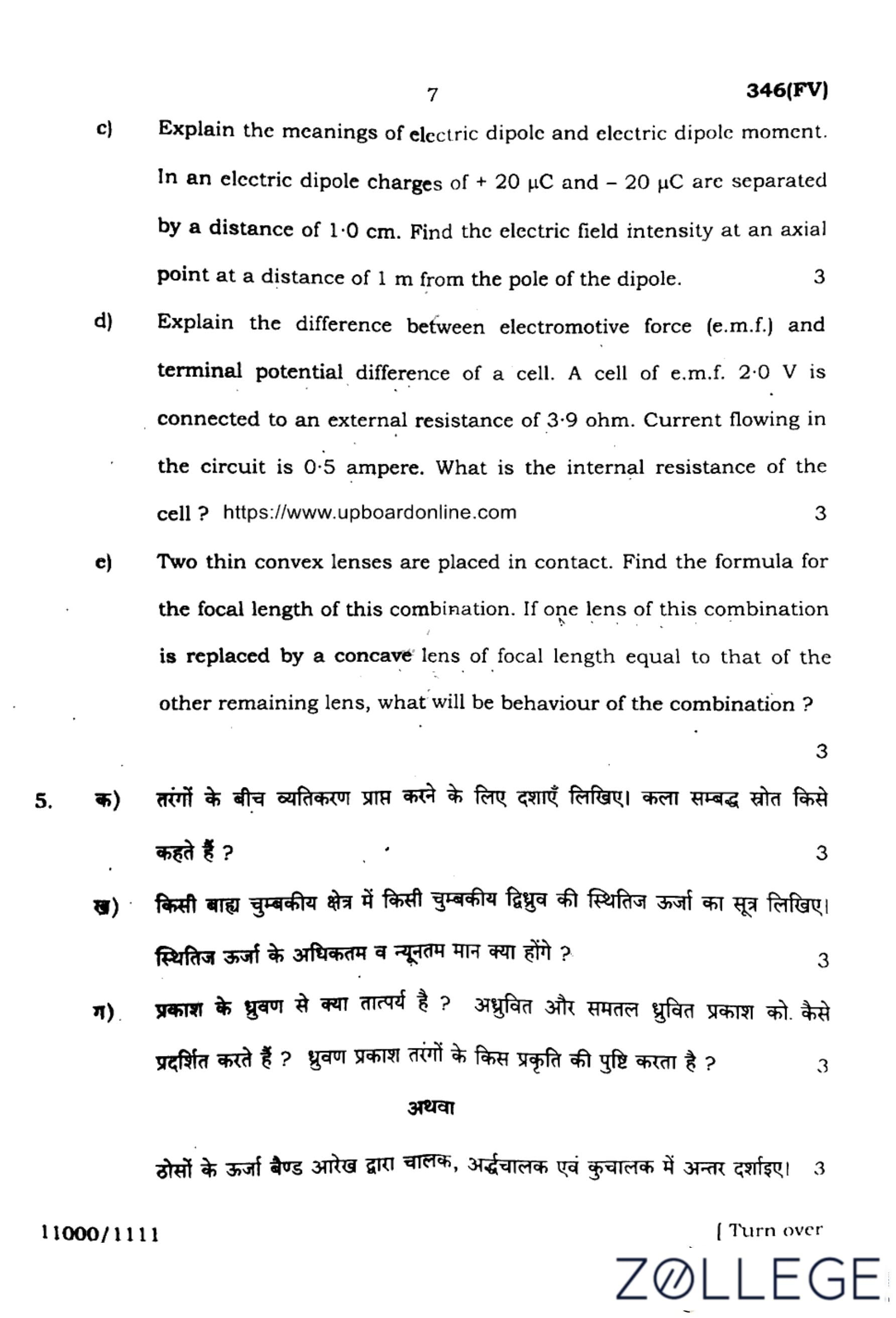
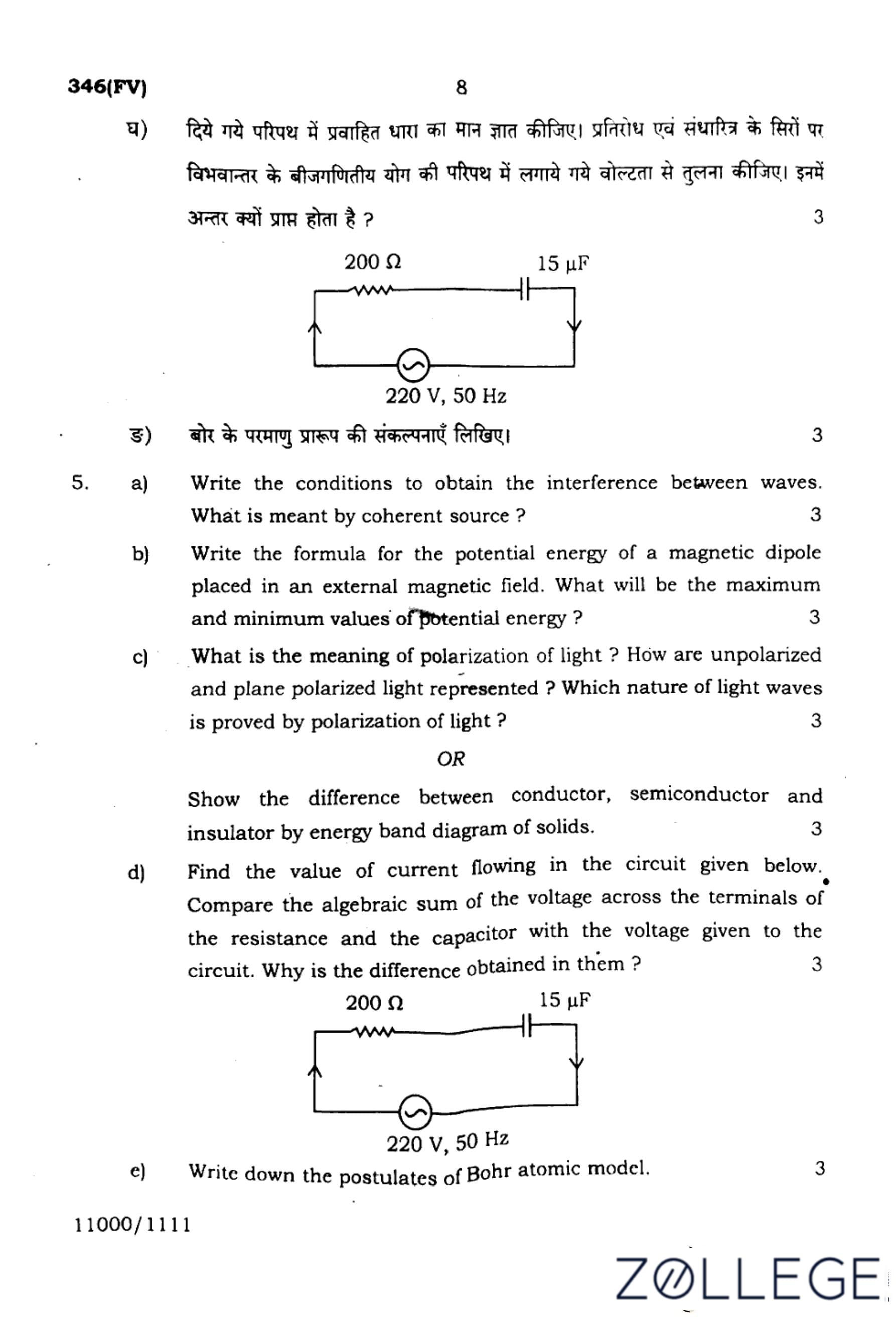
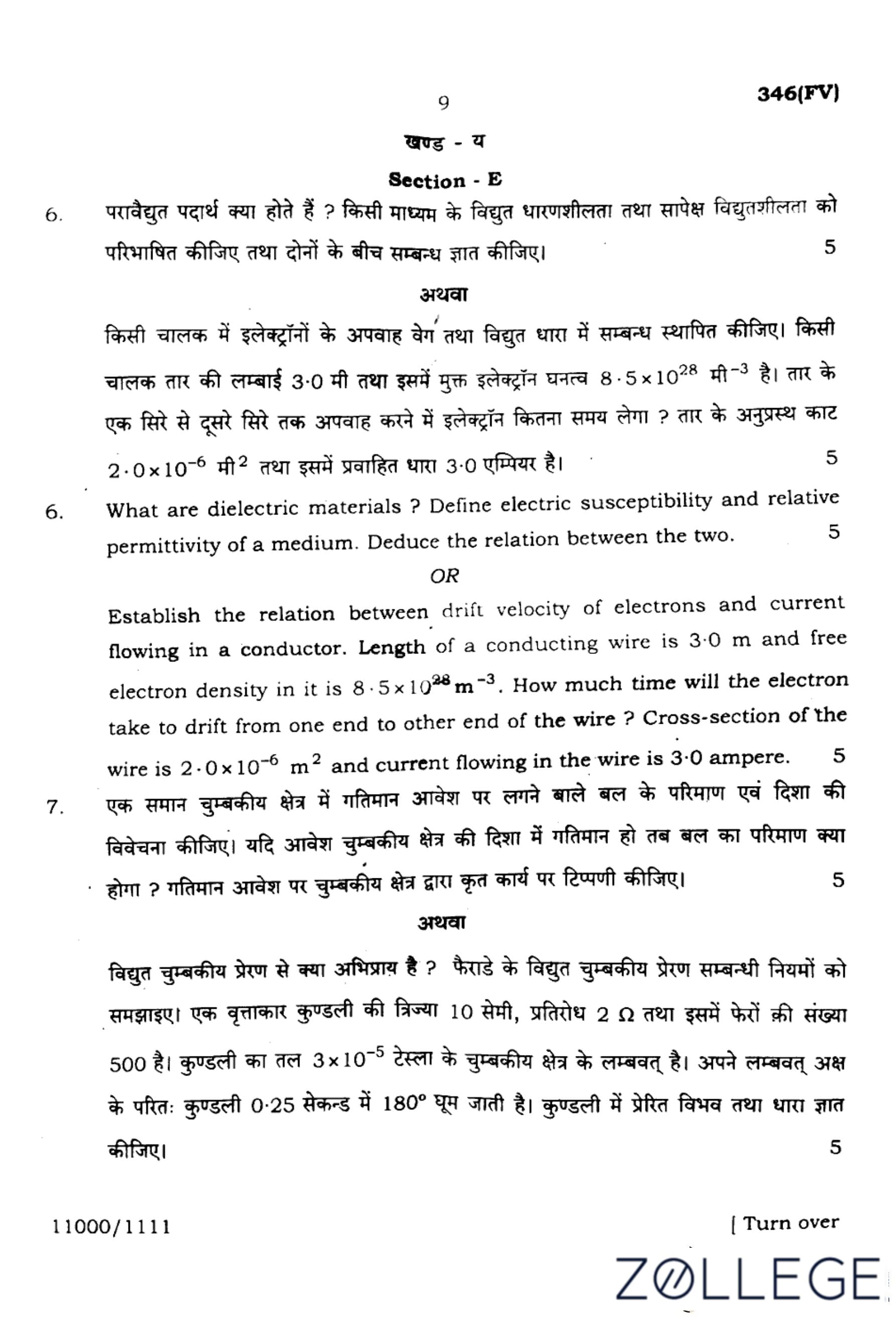
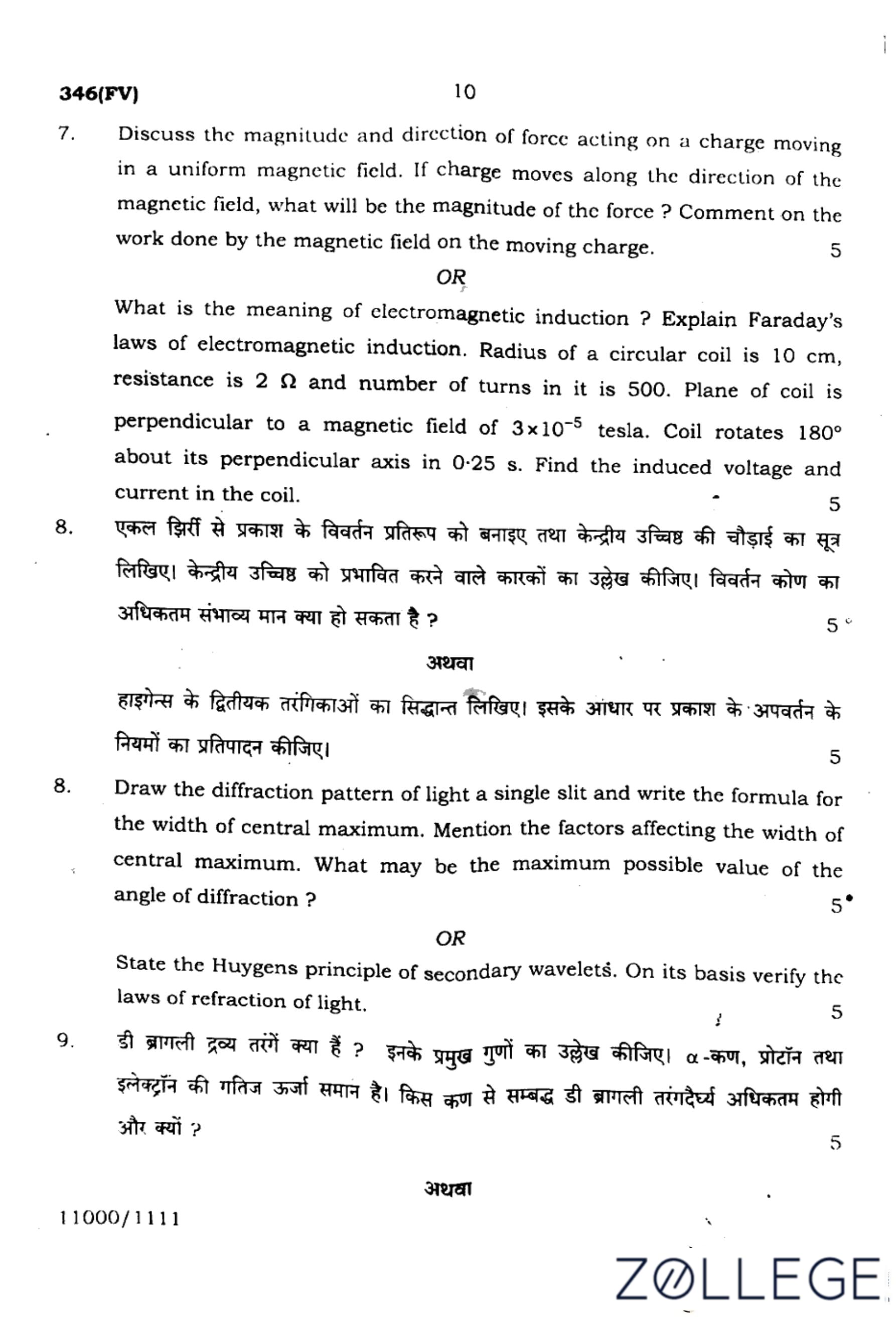





Comments